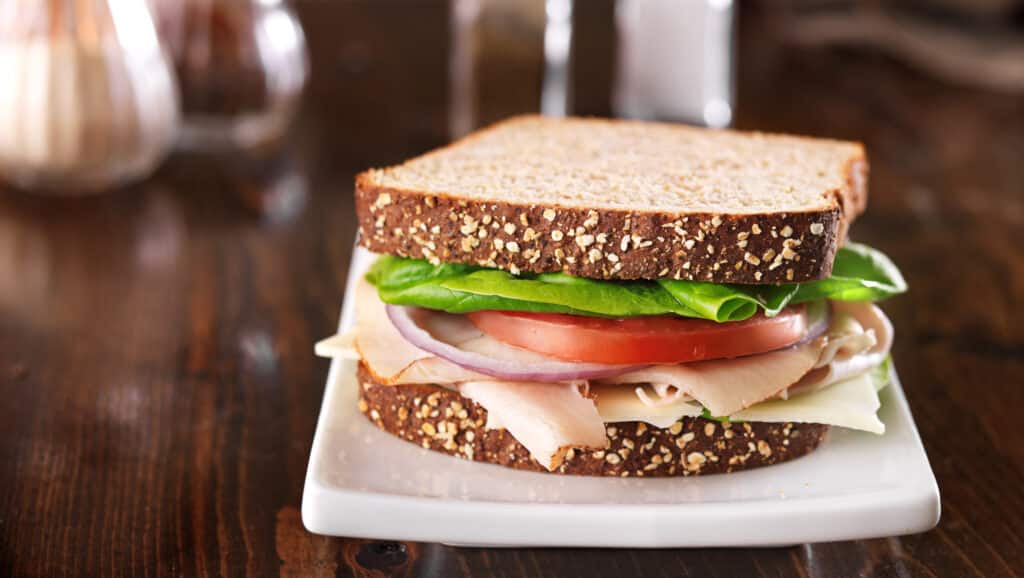Despite 42% of people saying bread is the most important ingredient in a sandwich1, many choose to opt out of using bread on sandwiches to cut carbs and calories. However, a 2017 study2 of children and adolescents showed that all grain foods, including breads, not only contribute less than 15 percent of all calories in the total diet, but they also provide vital nutrients that many Americans lack in their daily diet including fiber, folate, iron, calcium, magnesium, and vitamin A. Moreover, the study reinforced that the ingredients inside the sandwich, not the bread itself, are the leading contributors of calories, fat, and sodium in the typical American diet.
To demonstrate how sandwiches can deliver meaningful nutrients and optimize health, researchers3 modeled sandwich ingredient combinations to help reduce calories, total fat, saturated fat, and sodium in a daily diet. Combinations included:
- 2 slices of whole grain OR enriched, refined grain bread, 2-3 slices of lunch meat, 1 slice of cheese, a few leaves of dark greens such as spinach, and a slice of tomato
- 2 slices of whole grain OR enriched, refined grain bread, 2 tablespoons of peanut butter, and 1 tablespoon of jam
By removing all the energy (calories) and nutrients from the usual sandwiches eaten by those in the study and substituting them for the four sandwich combinations stated above:
- Calories in the total diet were reduced by 46-87 calories
- Total fat in the total diet was reduced by 5-14 grams
- Saturated fat in the total diet was reduced by ~ 5 grams
- Sodium in the total diet was reduced by 400-790 milligrams
- Overall daily amounts of folate, iron, thiamin, niacin, and fiber increased
With a few simple steps, we can build better sandwiches and deliciously enjoy a variety of food groups, including grains, and the nutrients they deliver.
—-
1The Keynote Report on Sandwiches. Datassential. September 2014. https://datassential.com/Pdf/MenuTrends%20Sandwich%20Keynote.pdf
2Papanikolaou Y & Fulgoni VL. Grain foods are meaningful contributors of nutrient density of American adults and help close nutrient recommendation gaps: Data from the National Health and Nutrition Examination Survey, 2009-2012. Nutrients. 2017: Aug 14;9(8). pii: E873. doi: 10.3390/nu9080873
3Papanikolaou Y & Fulgoni VL. Certain Grain Foods Can Be Meaningful Contributors to Nutrient Density in the Diets of U.S. Children and Adolescents: Data from the National Health and Nutrition Examination Survey, 2009–2012. Nutrients 2017, 9(2), 160; doi:10.3390/nu9020160

